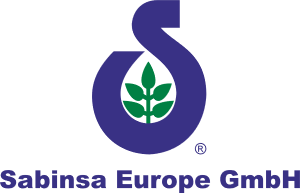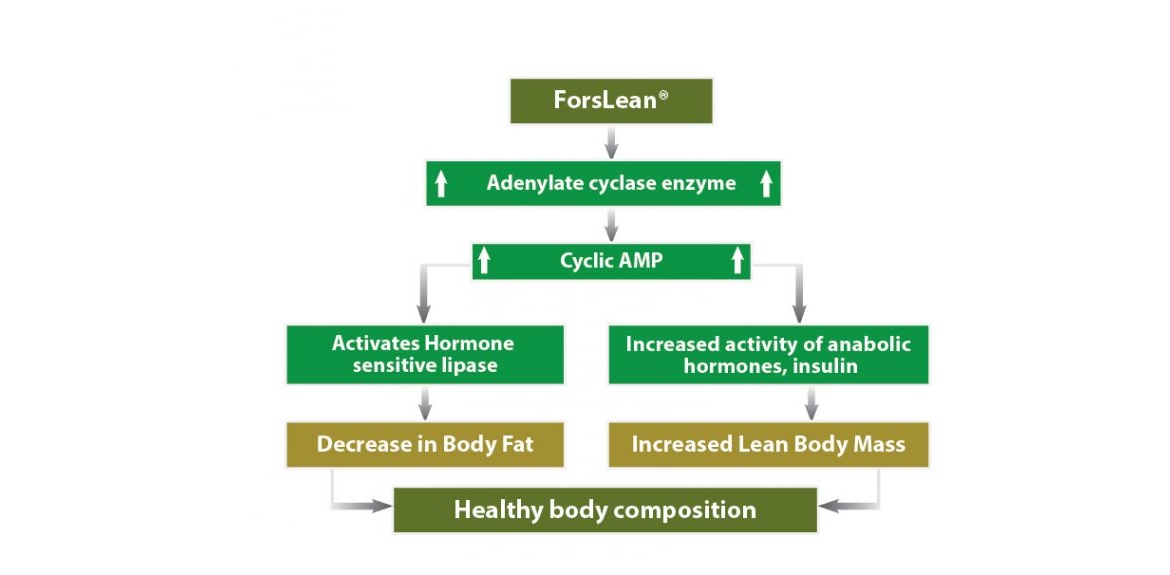Coleus forskohlii extract (standardized to contain 95% forskolin) is potentially useful in skin care formulations, particularly as a conditioning agent. Coleus forskohlii belongs to the Natural Order Labiatae (Lamiaceae), a family of mints and lavenders.
Coleus forskohlii is the only known natural source of the unique adenylate cyclase activating phytonutrient, forskolin1. Adenylate cyclase is the enzyme involved in the production of Cyclic Adenosine Monophosphate (cAMP), a significant biochemical agent in metabolic processes. Adenylate cyclase is also involved in the regulation of lipolysis or enzymatic breakdown of fat in the adipocytes (fat cells). Forskolin is therefore potentially useful in topical fat reduction.
Topical fat reduction in specific areas of the body is a common concern for women. Ronsard2 popularized the term "cellulite" to describe the dimpling and "orange peel" external appearance of the thighs, the cause of which was attributed to the aging process by later researchers3.
The adrenoreceptors play important roles in the regulation of lipolysis in fat cells4. Adrenoreceptors are neurons that are activated by adrenaline (epinephrine) or similar substances. The relative number of beta -2 and alpha-2 adrenoceptors on the surface of the fat cells determine the balance of lipolysis in those cells. Due to the increased number of alpha-2 adrenergic receptors in the hip and thigh region in women, fat mobilizaton becomes more difficult from these areas5. Hormones such as estrogen influence the number of alpha-2 and beta-2 adrenergic receptors beta-adrenergic stimulation and alpha-2-adrenergic inhibition has been reported to increase lipolysis from fat cells. However, this approach . approach would not be helpful if the balance of adrenoreceptors is faulty.
Forskolin bypasses the adrenoreceptors, increasing cAMP levels directly, thereby stimulating lipolysis.as shown in the figure:
A clinical study performed in 1987 established that regional fat loss from the thigh in obese women could be effectedthrough adrenergic modulation6. In this study, 28 obese women were placed on a calorie-restricted diet and subjected to either isoproterenol injections, a cream containining forskolin, aminophylline and yohimbine or cream containing one of these ingredients, three to five times per week for four weeks. The opposite thigh was treated with a placebo (injection or cream), serving as the control. The treated thighs lost significantly more girth after treatment (both by injection and by cream). Additionally, no adverse reactions were observed that could be attributed to either the injection or the cream. The authors of this study concluded that localized fat loss could be effected through topical application of substances like forskolin that stimulate lipolysis.
Coleus forskohlii extract 95% is therefore potentially useful in dislodging localized fat deposits immediately under the skin, when applied topically. The recommended levels of use as a skin conditioning agent : 0.1 to 0.5% of a topical formulation, such as an ointment, cream or lotion. To improve transdermal penetration of the extract, 0.01-0.1% of Cosmoperine? (a patent pending and registered trademark of Sabinsa Corporation)7 may be added to the formulation.
References:
- De Souza, N.J. (1991) in Recent Advances in Medicinal, Aromatic & Spice Crops, (ed: S..P. Raychaudhuri.)
- Ronsard, N. Cellulite: Those Lumps, Bumps and Bulges You Couldn't Lose Before. New York: Beauty and Health Publishing Co. 1973.
- Bayard, E. The Thin Game: Dieting, Scams and Dietary Sense. New York Avon Books. 1979.
- Arner, P. (1992). Am. J. Clin. Nutr. 55:228S-236S 5.Greenway, F.L. et al. (1995) Obesity Res. 3 Suppl. 4: 561S-568S. 6.Greenway, F.L. et al (1987) Clin. Ther. 9(6):663-669. 7.Badmaev, V. and Majeed, M. (2001) Agro-Industry Hi-Tech. January-February, 6-10.
Sabinsa’s upcoming shows
PERSONAL CARE 2002: Paris,
France,
February 19-21, 2002
NUTRITIONALS 2002:
Anaheim CA,
February 5-7, 2002
NUTRACON 2002: Anaheim,
CA,
March 11-12, 2002







